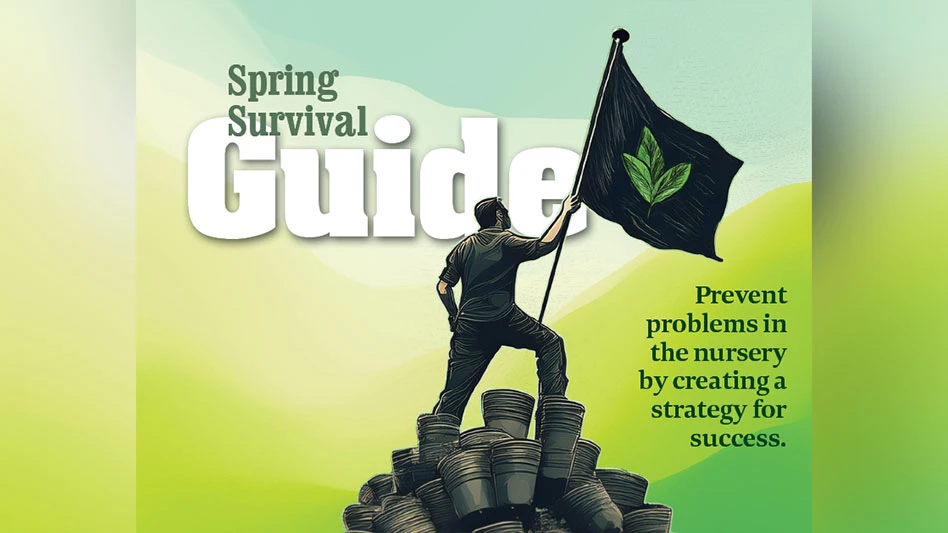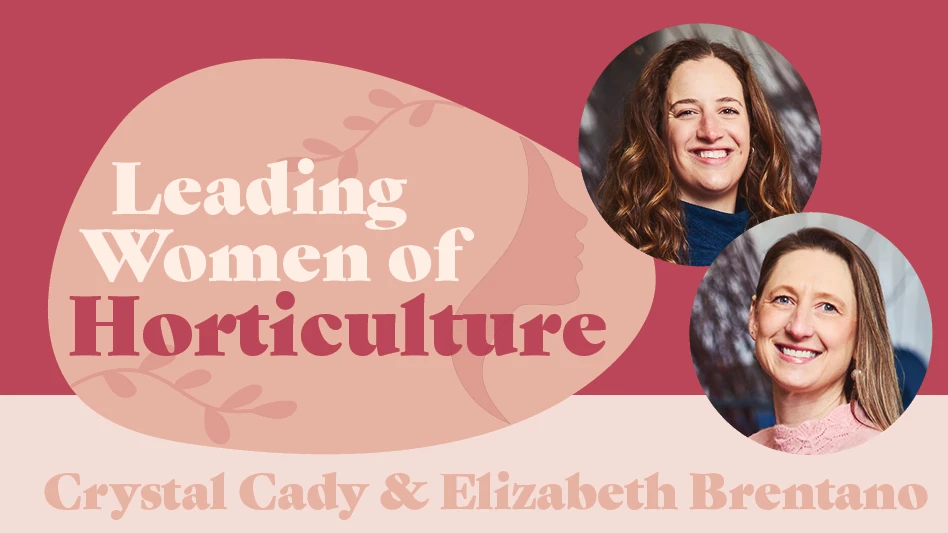

In 1970, consumers saw an average of 500 advertisements per day. In 2015, that number was more than 5,000. Digital viewing passed TV in 2013 as the primary way consumers see these ads, and unsurprisingly it is smartphones that are driving the change. Now, brands are competing with each other for the consumer’s attention and cash.
“Choice and power
A few years ago, Petersen took an in-depth look at Monrovia’s customers. The California-based grower works with breeders and plant hunters around the world to acquire, trial and promote new plants. Monrovia wanted to learn more about what drives its business. So it began studying the demographics of consumers more closely, looking for clues to the purchasing puzzle and opportunities to reach beyond its typical consumer base.
He found that digital marketing is the best way to reach customers under the age of 45. And citing his company’s research, noted that a consumer is 30 percent more likely to buy from a company if he or she has already interacted with that company online already. So Monrovia began to focus on improving its brand awareness.
After poring through the research, the No. 1 takeaway was that plants were seen as too complicated. Shoppers were overwhelmed not only by garden center workers whose explanations, though well-meaning, went straight over the heads of the shoppers who were not looking for a horticulture lesson.
Monrovia is acting on this information by changing its tags and labels to rely more heavily on icons that describe plant features like watering guidelines and sun requirements, instead of lengthy written descriptions.
The company has also ramped up its social media presence in an attempt to reach the younger demographics. Pedersen hired a social media professional who has increased Monrovia’s social media presence by an unfathomable amount. In 2010, Monrovia barely had 100 Facebook likes and 500 Twitter followers. Now, the company has 121,000 Facebook likes and 13,800 Twitter followers – a robust social media presence, which translates to brand awareness.
Branding has a track record of making a difference to consumers. Like Monrovia, Ball Horticultural has done its own consumer research on what matters to consumers. For example, they know which demographics are the biggest fans of PanAmerican Seed’s Wave petunias and Cool Wave pansies. Through its research, Ball knows the Wave brand is especially valued by two primarily female audiences. Dubbed “the Colorful Gardener” (age 45-55) and the New Homeowner (age 28-32), by Ball, these demographics are the strongest consumers of the Wave brand.
Wave packaging outsells similar products in plain black pots six to one. The distinctive pink branded pots, packs and baskets promote greater sell-through and maintain a premium product image.
The first Wave petunia was unveiled in 1995, and within four years became the no. 1 selling petunia in North America. In 2011, Wave created a massive addition to the brand with Cool Wave pansies. These gave retailers selling opportunities for spring and fall seasons.
Branding continues to be important to growers. Bailey Nurseries recent rebranding effort (as detailed in last month’s Nursery Management cover story) updated the Minnesota-based company’s corporate identity and logo to simply “Bailey.” Several business units will operate under the Bailey brand, including plant and development from Bailey Innovations, and the unifying tagline of “Growing What’s Next,” a theme that frames the company’s drive to constantly evolve and innovate.
Spring Meadow Nursery also recently rebranded itself. The Michigan wholesale grower debuted its new logo in December, ahead of the MANTS trade show, and launched its new website in June.


The previous logo consisted of a sprig of three green leaves which represented Spring Meadow Nursery’s shrub propagation heritage. This is still reflected in the leaf of the new design, however, the addition of a colorful flower bud expresses a dedication to the development and introduction of new, colorful, flowering shrub genetics.
The streamlined presentation also edits out the words “Nursery Inc.” from the branding, reinforcing a reach that extends far beyond nursery work.
“What we do at Spring Meadow has been continuously evolving to meet the needs of our customers and bring new plant varieties to the market,” says product development and marketing manager, Tim Wood. “We felt a need for our identity to match that evolution and this new logo does that.” (Logos provided by respective companies)


Go mobile
Put your marketing dollars where the consumers are: their phones.
However, don’t think that the young are the only ones you can reach with mobile-friendly marketing. Although the younger generations led the way (and still may help with troubleshooting), consumers age 55 and older are the new leading group of smartphone adoption. According to Deloitte’s 2017 Global Consumer Mobile Survey, consumers in that age group have a compound annual growth rate of 8 percent compared to roughly 2 percent for 18- to 34-year-olds.
That survey, which measures responses from 2,000 U.S. consumers ages 18-75, found the average smartphone user looks at his or her phone 47 times a day. That’s fairly similar to the last three years. But the youngest generation measured in Deloitte’s survey, age 18-24, checks their phones an astounding 86 times per day. That’s up from 82 times a day in 2016.
This demographic group also leans heavily on their phones as a resource when making a purchasing decision. A stunning 93 percent of 18-to 24-year-olds in Deloitte’s survey use their phones while out shopping.
If these statistics aren’t clear enough, you need to improve your website to reach consumers where they are: on their phones. Kerstin Ouellet, president of Pen & Petal, a horticultural marketing communications agency, says growers need to focus on mobile optimization.
“If your website isn’t
In Pen & Petal’s Profit Pointers newsletter, she provides several tips to make your website more
- Make it snappy. The time it takes your page to load is pretty important. The average time it takes to fully load a mobile landing page is 22 seconds—and one study suggests your site should only take 3 seconds to load. Clearly, this means there is room for growth. If you can speed up your site enough to get it to load for mobile users in 3 seconds or less, you’ll smoke the competition. That means more website traffic, more leads and more sales.
- Be sure 100 percent of your site works on mobile. Your site should be responsive. That means it should respond to whatever device or platform it is read on. Check to see if pages can be shared on social media, orders can be made and the display stays the same or is consistent.
- Vary content formats. Some visitors will read the content on your site, but most customers enjoy other forms of content, such as videos, interactive tools, infographics, or even clickable slideshows. It's safe to say that customers use the internet more on their mobile devices than any other device. If you want to gain more customers, make the change. You won't regret it.

Understand your customers
Different demographics have different priorities.
Their purchases are driven by quality,
Millennials (age 22 to 37) stick with the companies they know and trust, demonstrating the most brand loyalty of all the generations. This means they are most open to marketing messages – assuming their interactions are personalized, brands stay true to their promises and their customer loyalty is rewarded.
Millennials care about loyalty rewards more than other generations, with 15 percent saying points influenced their most recent purchase. Millennials are more likely than any generation to find
Generation X
Baby boomers are the most traditional consumers, shopping with brands that offer wide selections at discounted prices. They are not motivated by loyalty programs or unique brand experiences, but members of this generation want to see a variety of well-priced products that meet their immediate needs. Boomers rank direct mail higher than any other generation (59 percent), while 59 percent also say they value email. Only 19 percent say they value social media as a marketing channel.
You can download the full report for free at www.yeslifecyclemarketing.com.

Don’t just make good, do good
Millennial consumers like to spend their money with good corporate citizens.
In 2015, Nielsen published its annual Global Corporate Sustainability Report. It indicated that, globally, 66 percent of consumers are willing to spend more on a product if it comes from a sustainable brand. Millennials gave an even more impressive showing, with 73 percent of surveyed millennials indicating a similar preference.
Additionally, 81 percent of millennials even expect their favorite companies to make public declarations of their corporate citizenship. According to Horizon Media's Finger on the Pulse study, these declarations can take the form of charitable or philanthropic endeavors, like Toms shoes’ mission to give a pair of shoes to a third-world child for every pair purchased, or General Mills’ Box Tops for Education initiative.
That means that this generation feels an imperative to spend its money on products from companies that do good, not just companies that make good products.
Plant brands can benefit from being sustainable and generating goodwill, too. American Beauties Native Plants is a brand that has been experiencing growth due to its proximity to the pollinator issue. Mark Sellew, president of Prides Corner Farms in Lebanon, Ct., co-founded the brand with Steve Castorani, who is also one of the founders of North Creek Nurseries in Landenberg, Pa. The brand added “Save the Pollinators” to its point-of-purchase material, and published fact sheets listing the best plants for bees and butterflies, or how to design different types of native plant gardens.
American Beauties partnered with the National Wildlife Federation, and the brand has donated more than $270,000 to support the federation’s Wildlife Habitat Program.
“It was a collaborative partnership, and it was a really good fit,” Castorani says. “They not only promote native plants, but they have this potential customer base that didn’t know where to buy native plants.”
As the American Beauties Native Plants brand strengthened, it broadened its ability to support other like-minded organizations. American Beauties has donated $12,000 to the Pollinator Partnership, $1,000 to the National Audubon Society, and $3,500 to Doug Tallamy at the University of Delaware. The brand also donated $5,500 to Catherine Zimmerman to support the production of her film, “Hometown Habitat, Stories of Bringing Nature Home.”

Read more in our February cover story: http://bit.ly/ABNatives2018
Get curated news on YOUR industry.
Enter your email to receive our newsletters.
Explore the July 2018 Issue
Check out more from this issue and find your next story to read.
Latest from Nursery Management
- Dümmen Orange North America celebrating 25th anniversary in 2025
- Redesigning women
- Illinois Landscape Contractors Association changes name to Landscape Illinois
- 2025 Proven Winners Horticulture Scholarship applications now open
- ICL’s Gemini Granular herbicide now registered for use in California
- Eurazeo Planetary Boundaries Fund acquires Bioline AgroSciences
- The Leading Women of Horticulture
- Leading Women of Horticulture: Dana Massey, Plantworks Nursery







